| |
|
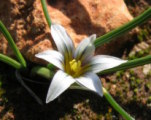 | |
| MaltaWildPlants.com by Stephen Mifsud |

|
| |
|
|
 |  |  |  |
| External Links: |
|
Cerinthe major (Honeywort) |
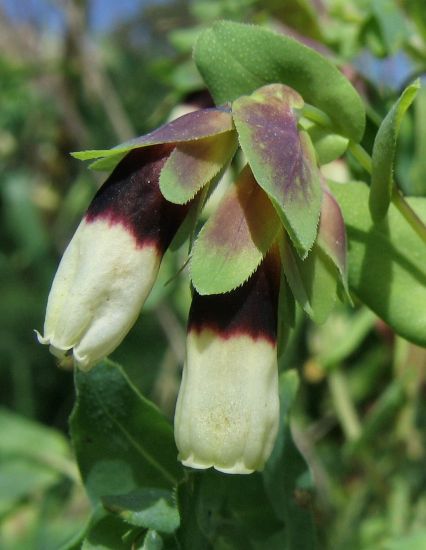
Cerinthe major (BORAGINACEAE.)
Images for this profile are taken from the Maltese Islands after year 2000. |
|
| Nomenclature |
Species name : | Cerinthe major L. | Authority : | Carl von Linne, Sweden, (1707 - 1778) | Synonyms :
(basionym or principal syn.) |
|
Plant Family : | | English name(s) : | Honeywort, Great Honeywort | Maltese name(s) : | Qniepen | Status for Malta : | Indigenous. Present on the Maltese islands before man | Name Derivation : |
Cerinthe: From the Greek keros (=wax) and anthos (=flower), referring to the waxy petals of the flowers or possibly to the old belief that bees take wax from the flowers. (Greek origin ); 2 = From the Greek "keros" (=wax) and "anthos", (=flower); referring to belief that bees take wax from the flower (Greek);.
major: Bigger, larger, greater, superior. This term was often given to plants which are larger or 'more important' compared to other species in the same genus. (Latin origin ); 2 = Large, great, high or of extensive size - possibly referring to the flower which is large when compared to other Cerinthe species (Latin).
| Remarks : | |
|
| Morphology and structure |
PLANT STRUCTURE: |
Character | Growth Form | Branching | Surface |
Description | | | |
General
Picture |  |  |  |
|
LEAVES: |
Character | Arrangement | Attachment | Venation |
Description | | | |
General
Picture |  |  |  |
| |
Character | Leaf Shape | Leaf Margin | Remarks |
Description | | | |
General
Picture |  |  |  |
|
FLOWERS: |
Character | Colour | Basic Flower Type | No. of Petals | No. of Sepals |
Description | Cream and Maroon | | 5 Most of their length is fused as a single tubular structure. | 5 |
General
Picture | |  |  |  |
| |
Character | Inflorescence | Description | Ovary | Stamens |
Description | | Flower made of one broad bract with a reddish brown tinge, 5 sepals which are one third of the corolla length, and a corolla with a tube-shaped structure which the inner half is maroon and the outer is cream or pale yellow. Inside lies the 5 stamens with pointed black anthers and a single and central carpel. | | |
General
Picture | 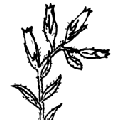 |  | 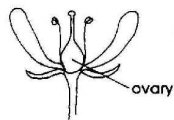 | 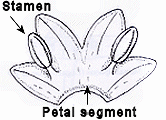 |
| |
Character | Scent | Average Flower Size | Pollen Colour | Other Notes |
Description | YES Slightly sweet fragrance in young flowers. | 22mm x 6mm (Tube length x diameter). | Yellow | - |
|
SEEDS: |
Character | No. Per Fruit | Shape | Size | Colour |
Description | 2 | Tooth-shaped Cylindrical with one end flat and attached in sockets in the receptacle and the apical end being rounded or pointed. They have a hard wrinkled texture. | 5mm long | Black (with some dark-brown patches). |
General
Picture |  |  |  |  |
|
FRUIT AND OTHER BOTANICAL DATA: |
Character | Fruit Type | Colour of Fruit | Subterranean Parts | Other Notes |
Description | | Black (Referring to the seeds). | | Nectar Flowers produces large amounts of nectar. |
General
Picture | 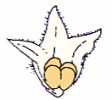 |  |  |  |
|
|
| Plant description and characters | |
Life Cycle: | Annual. |
Growth Form: | THEROPHYTE (annual plants, herbaceous) |
Habitat: | Valley sides, watercourses, Damp grounds and soils that contain plenty of water. |
Frequency: | Common |
Localities in Malta: | Quite common especially in valleys. Few examples with plenty of plants include Chadwick Lakes, Mistra, Wied Ghollieqa, Gnejna and Bahrija. |
Plant Height: | 20-70cm. |
| Feb-Apr |
Protection in Malta: | Not legally protected till the last update of this website (2/Mar/2022) |
Red List 1989: | Not listed in the Red Data Book of the Maltese Islands |
Poison: | |
This herbaceous annual plant is frequently found in places where there is plenty of water, such as water courses, water catchment zones, ponds or valleys. The plant is multi-branching and may assume a semi-erect / prostate form or fully erect, depending on the length of the plant. It can be found as a small plant (20cm long) or larger reaching up to 70cm in length. The stem is glabrous, pale green and sometimes gets a red coloration at the side facing directly sunlight.
The leaves are also pale green and their length vary according to their age and location. Basal leaves are usually the largest, spoon shaped and paler or more yellowish in colour while young leaves found towards the flowering stem are sessile and generally oblong with a rounded apex or spatulate or 'foot'-shaped. Their base have two small auricles (5-6mmlong ) clasping the stem. The leaves are arranged along the stem in an alternate way and they tend to point out at right angles with the adjacent leaves above or below. Their size is 45mm long and 18mm wide in average. Other interesting features about the leaves are that they have a ciliated outline (tiny hair like projections) and sometimes It has a shallow sinusoidal form. Most leaves (especially mature ones) have numerous small pale green or whitish warty lumps concentrated at the center of the leaf. Basal leaves may have few sparse bristles. The margin of the leaves, bracts and sepals have numerous, tiny, non-spiny hair-like projections (i.e. ciliated).
The plant produce many inflorescences in the form of unilateral racemes, which tends to have a curled down position with the flowers hanging down like 'bells'. Such an infloresecense is referred to as a scorpoid cyme. Normally 2 adjacent flowers mature at the same time along the flowering stem and so they are often seen in pairs.
Each flower consists of one bract, 5 sepals and a cylindrical corolla. The bracts are lanceolate in shape, 16-18mm long, non hairy, and their outline bear many soft, spine-like projections. The variety in Malta has its bracts with a distinctive reddish-brown patch at the base and most of its central part. Other varieties (eg: purpurascens) have bluish bracts. This size of the red patch can be large as half (or more) the size of the bracts. The sepals are green (no red coloration), and cover more or less one third of the flower length.
The flower consists of a corolla which its petals are completely fused in the form of a cylindrical tube measuring about 24mm long and 6mm diameter. The outer rim have 5 tiny flaps indicating that the corolla is formed from 5 petals. The colour of the corolla is divided into two halves. The outer half is cream-white or pale yellow and the basal half is maroon (reddish brown) which gradually fades back to cream at the base, but this part is covered by the bright green sepals. The change from cream to reddish-brown at the center of the corolla is sharp. The outer part of the corolla is often slightly pleated or grooved longitudinally.
The reproductive organs include 5 stamens and a central carpel. The stamens are attached to the inner wall of the corolla (at the reddish-brown ring) and they are grouped together as a single tapering conical unit, though they are not fused together. Each stamen is about 14mm long and consists of a 7mm bright-yellow filament and a 7mm black, pointed anther mostly covered with yellow pollen. The style and stigma is a thin, uncoloured and inconspicuous structure that protrudes out of the flower by few millimeters.
The flower produces plenty of nectar and is visited by several bees continuously. The fruit is loosely covered and protected by the sepals and consists of 2 black nutlets which are bullet shaped, that is rounded-cylindrical body with a curved or slightly beaked apex and a flat base. They measure about 5mm by 3.5mm. The black seed coat is smooth, shiny, hard, and contains dark brown patches.
|
|
| Information, uses and other details |
Nativity and distribution
Northern Africa: Algeria, Libya, Morocco, Tunisia
Western Asia: Turkey
Europe: Albania, Greece (incl. Crete), Italy (incl. Sardinia, Sicily), France (incl. Corsica), Portugal, Spain, Yugoslavia.
[ WWW-26]
The plant is native to the Mediterranean region or basin. [ WWW-92, WWW-95] .
Name derivation and History
Although grown in European pleasure gardens since the middle ages, Cerinthe has no known medicinal important uses. According to his famous book, 'The Herbal', its ornamental qualities earned Honeywort a place in John Gerard's garden in the late 1500's. Gerard liked to sip honey_flavored nectar from the tiny flowers, and noted that the leaves have the taste of "new wax" or fresh honeycomb as well. Since his day, however, Honeywort fell from favor. It has never been a traditional border plant, for no prominent Victorian or Edwardian gardener mentions it. Indeed, it was unavailable in the seed trade until the recent reintroduction of a well_colored European garden selection. [WWW-95]
More than 2000 years ago, Virgil described using this plant as an offering to swarming bees in order to entice them into a new hive: "Here sprinkle the odors ordained, crushed balm and lowly tufts of Honeywort, and make a tinkling round about and clash the cymbals of the goddess Mother; they will settle on the scented seat and in their way creep into the inmost covert of their nest." It got its name "Cerinthe" because of the waxiness of its leaves and because it was thought bees got wax for their hives from this plant. [WWW-93]
Although it was popular in the Renaissance--enough to rate a mention in Culpeper--this native of the Mediterranean region was subsequently rarely grown the West until a couple decades ago. Apparently because it is a quick-growing plant--it can go from seed for blooms in 10-12 weeks and have two generations in one season--this is considered a Mercury herb. Because it is so favored by bees, a martial insect, it would be a good herb to use in works where you want to win over a hostile force or attract defensive hosts. This member of the borage family is also known as the blue shrimp plant and the blue wax flower. [WWW-93]
Medicinal properties
Cerinthe major is useful against diseases or have medicinal properties as indicated in the table below [WWW-66] :
| Diuretic |
Tending to increase the secretion and discharge of urine. [WWW-32] |
| Jaundice |
Helps in the treatment of Jaundice. - Jaundice is the yellowing of the skin and the whites of the eyes caused by an accumulation of bile pigment (bilirubin) in the blood; can be a symptom of gallstones or liver infection or anemia. [WWW-32] |
| Scurvy |
Helps to prevent or treat scurvy. - Scurvy is a condition caused by deficiency of ascorbic acid (vitamin C). [WWW-32] |
Cultivation and Propagation Details
Cerinthe grow well in containers, where they will drape gracefully over the sides. For a cut flower the stem needs to either be flamed or dipped in hot water. [WWW-91]
When the seeds are easy to remove, pull them off and store them in a closed film container in the fridge over winter. Then around Mother's Day, plant the seeds about 1 inch deep in good garden soil and full-sun. Give them average watering and before you know it, you will have a profusion of attractive blooms attracting visitors, and hummingbirds to your garden. [WWW-92]
The following propagation details is given by "Local Harvest" - a flower nursery in USA: [WWW-94]
Half-hardy Perennial - usually grown as an Annual that Flowers from June to frost. Very attractive plant with purple- blue flower heads on deep blue green bracts ideal for bedding and containers. Cerinthe is a quite large seed and is best sown individually into a plug tray. Sow on to very moist compost and cover to a depth of 10mm with vermiculite. Propagate at 18 to 20 c and germination should begin to take place after about 10 days. Continue to maintain a temperature of 15c for approximately 2 weeks after germination at which point it can be lowered to 10. November / December sowings will also work and will result in late April / early May flowering. The seedlings should develop quite quickly and can soon be transferred into pots and packs. Cerinthe major Purpurascens is suitable for pot, but it will be at its most impressive as a slightly larger plant in June. [WWW-94]
The following propagation information is given by a flower nursery called "Alchemy Works Seeds and Herbs" [WWW-93] :
Soak the large seeds overnight and sow 3/4" deep outside after the last frost in your area or start indoors 4-6 weeks before the last frost, planting in Jiffy-7 pellets. It will germinate in 7-21 days at 70F/21C. Watch out for damping off if you are starting them inside. Transplant to full sun and good soil for taller plants, partial shade for shorter, less floppy plants. It can be grown in pots. A half-hardy perennial that freely re-seeds, in all but the warmest parts of North America it should be considered an annual. The leaves on this plant have a nice greyish/white "bloom" that makes them look more waxy. As the plant matures, the bracts (a leaf that acts like a flower petal) around the flower will change from green to purple to bright blue. Honeywort does well with heat but needs water. Harvest seeds before the pods hurl them around and plant in spring. BlueHoneywortt gets at least 2ft/60cm high and wide, taller in full sun. Deadheading will produce more flowers and more branching. It makes a good cut flower. [WWW-93]
Rich, open_textured soil and ample water make for an exceptional abundance of blossoms and bracts. [WWW-95] Hence this is the preferred type of soil for the plant. In leaner, drier soils, plants grown in full sun may only reach two feet in height, while those grown in light shade and poor soil are generally compact and rarely over a foot and a half high. Honeywort makes a fuller and far more floriferous mound when given ordinary amounts of supplementary water. In damp shade, this sun lover languishes and may rot away before fulfilling its floral potential. Like so many Mediterranean natives, Cerinthe major is as drought tolerant. This plant is especially fun to work with because it is a color changer, its bracts altering from royal blues and cloudy purples to tawny coppers and ruddy browns when backlit by slanting sun. [WWW-95]
It is also possible to harvest whole branches of blooming Honeywort, bringing them inside to dry. Keep the branches lightly covered with cheesecloth or newspaper to keep the seed from shooting across the room as it dries. Although many seeds will be unripe when you gather the branches, most will ripen to maturity as the bracts wither. [WWW-95]
To save Honeywort seed over the winter, place it in a clean, dry jar with a small packet of film desiccant. A tablespoon of dried milk powder, loosely wrapped in a square of cheesecloth, will similarly absorb moisture from the air, keeping the seeds properly dry until spring. [WWW-95]
Cerinthe major var. Purpurascens
There is a variety of this plant called Cerinthe major var. Purpurascens which is more popular in nurseries and gardens than the normal variety. This variety has 2 striking physical differences from the wild plant in Malta:
1) the flowers are intense purple instead of cream / maroon
and/or
2) the bracts and sepals have a wonderful varying bluish-violet colour
Click links to view images of this variety: Image 1 - Image 2 - Image 3 - Image 4
This borage relative offers handsome foliage and stunningly colorful bracts that long outlast its small flowers. Honeywort's flowers are tubular bells of intense blue or purple, delicately scalloped and lined in cream. The bells are clustered in twos and threes, each group nesting inside brilliantly blue bracts like overlapping fish scales. The true leaves are rounded like grapefruit spoons, lustrously grey_blue in color and as fleshy in texture as a succulent. The new growth is strikingly stippled with creamy stripes and flecks which fade to a subtle marbling as the leaves mature. [WWW-95]
This Mediterranean native grows 2 foot tall, it has interesting blue leaves and is covered with dark purple tube flowers with a yellow interior. Visitors to my garden always notice Honeywort, and beg to know where to get it. The best variety is called 'Purpurascens', which is the variety generally carried by nurseries. [WWW-92]
Miscellaneous notes
Cerinthe comes from the Greek word keros -- wax, and anthos -- a flower. It was supposed that bees obtained wax from the flowers. C. major was important at one time as a nectar source for honeybees. [WWW-91]
This beautiful and unusual annual draws in the hummingbirds and bees. [WWW-91, WWW-92] This plant is very attractive to bees because of the great amount of nectar in the flowers; hummingbirds will also visit it. [WWW-93]
In early summer, Greek fields of these common wildflowers are hazed with a pewtery slate blue, like a shimmering reflection of the hot summer sky. [WWW-95]
Personal Observations
Honeywort attracts bees in the wild
When pewter was photographed in Wied Ghollieqa (San Gwann), it was lying amongst several wild plants which mostly consisted of Oxalis pes-capres, Borago officinalis, Glebionis coronaria and other few species. There was also few stone fruit tress (likely almond) with numerous flowers. From all this variety of flowers to choose from, almost all bees visited the Honeywort and ignoring all the rest. It was interesting seeing the hovering bees visiting and stopping on every bell-shaped flower and peeps their head inside for a sip of nectar. This strongly confirms the attractive power of the plant to bees. The flowers are not strongly scented, compared for example to Oxalis pes-capres, so the bees may know the importance of this flower by instinct. [SM]
|
|
| Links & Further literature
(0 papers) |

Google Web |

Google Images |

Google Scholar |

Research Gate |

Wikipedia |

JSTOR |

GBIF |

Med Checklist |

Cat. of Life |

EoL |

IPNI |

World Flora Online |

Plants of the World Online |

Vienna Virt. Herb. |

RBGE Herbarium |

KEW Herbarium |

MNHN |

Arkive |

IUCN |

CABI |
Kindly Email if there are papers and publications about local
studies or information about this species to be included in the list above.
|
| Photo Gallery (37 Images) | 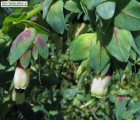 |
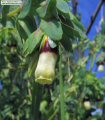 |
 |
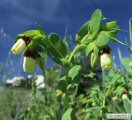 |
IMAGE: CERMJ-01 Photo of the tubular-shaped flowers hanging upside down like bells (hence the Maltese name 'qniepen'). |
IMAGE: CERMJ-02 Close up photo of flower, half cream and half maroon in colour. Note the 5 small flaps at the rim of the corolla, indicating the it is made up of 5 fused petals. |
IMAGE: CERMJ-03 Photo of flowers, normally seen in a pair per inflorescence. |
IMAGE: CERMJ-04 Photo of 2 inflorescences forking at two opposite directions and forming an upside down arch with their flowers blooming at the tip. |
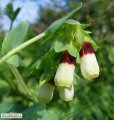 |
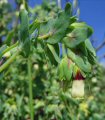 |
 |
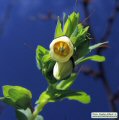 |
IMAGE: CERMJ-05 Photo of a pair of flowers in situ. |
IMAGE: CERMJ-06 Photo of the flowering stem which is arching down and consists of numerous bracts and sepals. |
IMAGE: CERMJ-07 Photo of flower (underside view) showing the stamens grouped as a single conical structure with the green and slightly taller style at their center. |
IMAGE: CERMJ-08 Photo of flower (underside view) showing the grouped stamens with bright yellow filaments. |
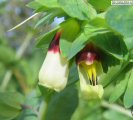 |
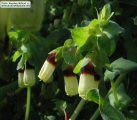 |
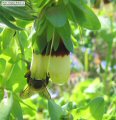 |
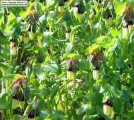 |
IMAGE: CERMJ-09 Photo of a flower with part of the corolla broken apart revealing the arrangement of the stamens inside. |
IMAGE: CERMJ-10 Photo of a small group of flowers. The adult plant forms several flowering branches and inflorescences but not more from 2 open flowers per inflorescence. |
IMAGE: CERMJ-11 Photo of a social bee collecting nectar from a Nepean flower. The honNepean visited by many bees continuously. |
IMAGE: CERMJ-12 Photo of group of flowers from several plants growing close together. Honeywort is a self-sowing plant and when seeds fall, new plants are formed adjacently, making areas of Nepean larger and larger every year given conditions are favourable for growth. |
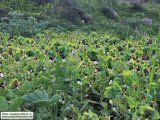 |
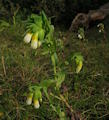 |
 |
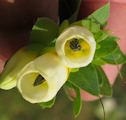 |
IMAGE: CERMJ-13 Photo of a large area with favorable flowers taken at Gnejna. |
IMAGE: CERMJ-14 Photo of a specimen with a different flower form which consists of yellow and white colour instead of brown and cream respectively. Such specimens are believed to be a kind of albinism, and have no taxonomical importance. |
IMAGE: CERMJ-15 Photo of flower of an 'albino specimen' showing that the shape and size of the flower is similar to the normal form and the difference is only in the colour. |
IMAGE: CERMJ-16 Photo of mouth of flower of an 'albino' specimen. |
 |
 |
 |
 |
IMAGE: CERMJ-17 Scanned image of flower against a white background. The 5 sepals are less than half as long as the flower and have a ciliated margin like the bracts and young leaves. Note the bluish coloration at the base/stalklet of the flower. |
IMAGE: CERMJ-18 Scanned image of flower against a dark background. The flower has this characteristic contrasting maroon and pale yellow colour. It measures 22mm long by 5mm diameter in average. |
IMAGE: CERMJ-19 Scanned image of a dissected flower showing the 5 stamens adjoined with the inner wall of the corolla. Each stamen is about 14mm long and has a firm yellow filament and a black anther (7mm long) which produce yellow pollen. There are two pointed structures at the base of each anther. |
IMAGE: CERMJ-20 Scanned image of inflorescences and flowers against a white background. Note the reddish brown patch at the central / basal part of the bracts. Sepals are completely green. |
 |
 |
 |
 |
IMAGE: CERMJ-21 Scanned image of inflorescences and flowers against a dark background. Young leaves along the flowering stem are oblong, and their base have auricles clasping the stem. Note the bluish colour at some of the flower petioles. |
IMAGE: CERMJ-22 Photo of plant in situ (Gnejna , Mar 2005). |
IMAGE: CERMJ-23 Scanned image of upper part of plant. Branching takes place at leaf axil. |
IMAGE: CERMJ-24 Photo of young leaves are oblong or lanceolate with auricles enclasping stem. A new shoot can be seen growing at the leaf axil. |
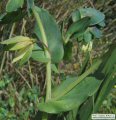 |
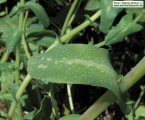 |
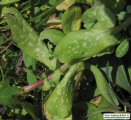 |
 |
IMAGE: CERMJ-25 Photo of young leaves. Note the ciliated leaf margin which is more conspicuous in young leaves, flower bracts and sepals. |
IMAGE: CERMJ-26 Close up photo of a leaf with its typical white or pale green lumps at the center of the leaf. |
IMAGE: CERMJ-27 Photo of mature leaves which are more elongated or spatulate, have more whitish patches and some may have few bristles sparsely distributed on the top face of the leave. |
IMAGE: CERMJ-28 Photo of several leaves along flowering stem. They are sessile and have this alternate arrangement with a tendency of pointing with an angle of 90-120 degrees from the next leaf above. |
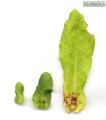 |
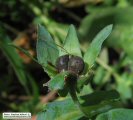 |
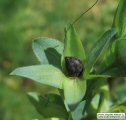 |
 |
IMAGE: CERMJ-29 Scanned image of an adult leaf (right), and 2 younger leaves. Adult leaves tend to have a spatulate shape. The ciliated leaf outline is more prominent in young leaves. |
IMAGE: CERMJ-30 Photo of fruit. Each flower can form one or 2 black nutlets that are plugged to the base. Many plants of the borage family produce 4 nutlets per flower but this makes only 2. |
IMAGE: CERMJ-31 Close up image of nutlet which have a black, shiny, hard seed coat with several patches of grayish brown colour. The dark hair-like structure is the remains of the style+stigma. |
IMAGE: CERMJ-32 Scanned image of fruit. Of the 5 sepals, 2 seem to be more broad. |
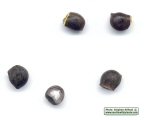 |
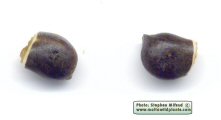 |
 |
 |
IMAGE: CERMJ-33 Scanned image of few nutlets. They are rounded bodies with a flat base and a beaked apex. They measure about 6mm in diameter. |
IMAGE: CERMJ-34 Magnified scanned image of 2 nutlets. Note the brown patches on the black seed coat. |
IMAGE: CERMJ-35 |
IMAGE: CERMJ-36 |
 |
| | | IMAGE: CERMJ-37 |
IMAGE: CERMJ-38 |
IMAGE: CERMJ-39 |
IMAGE: CERMJ-40 |
|
| | |

